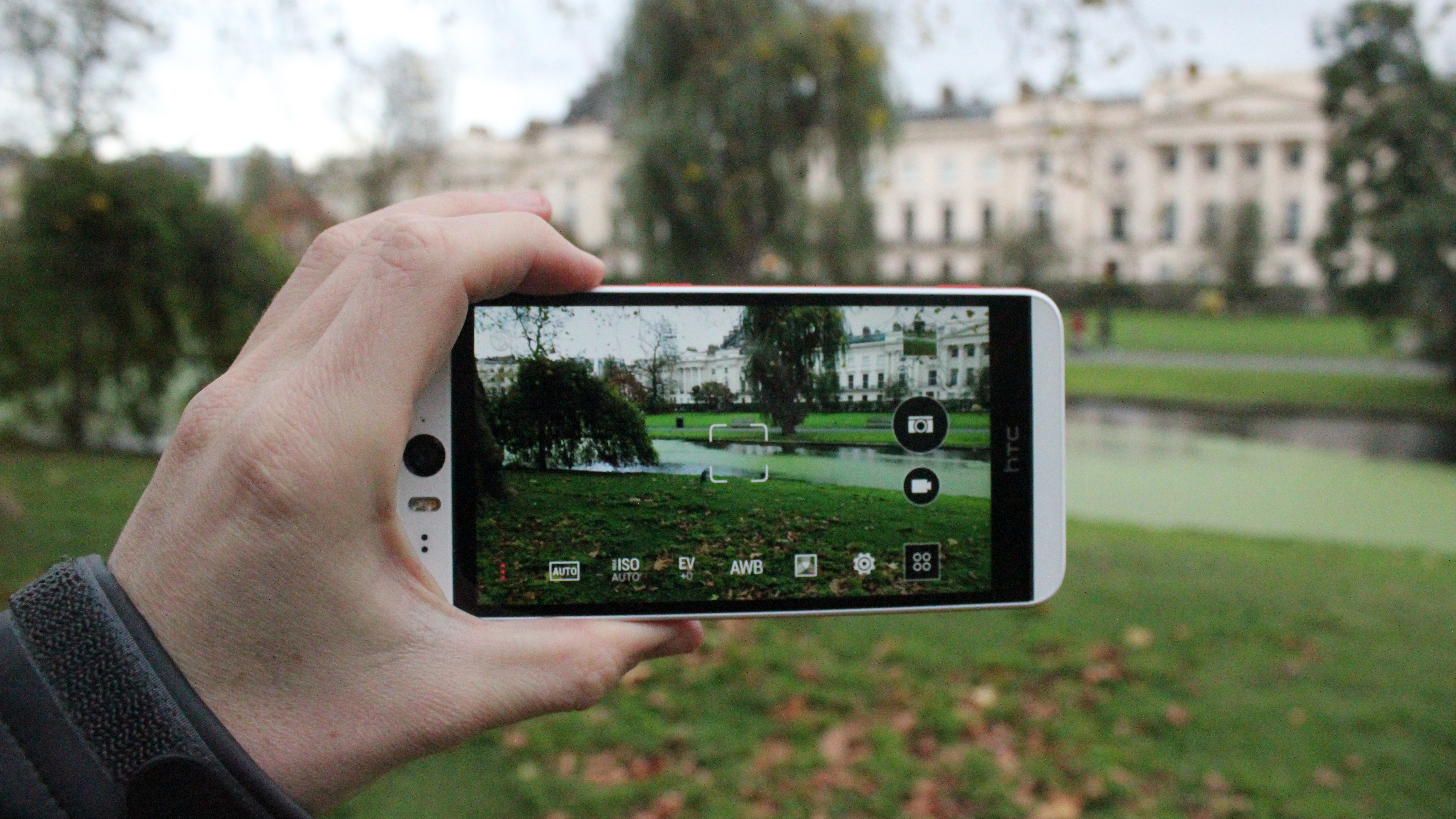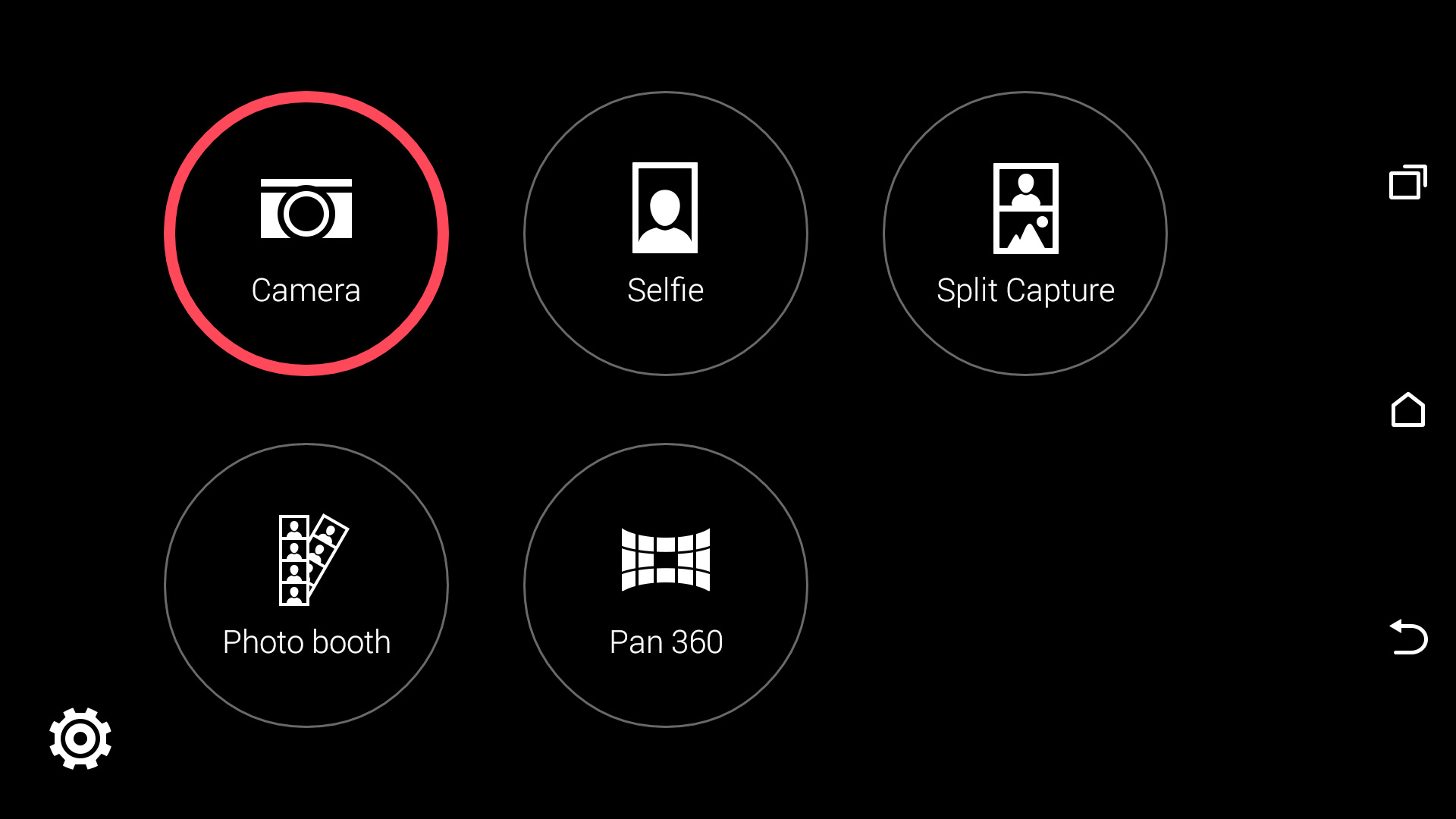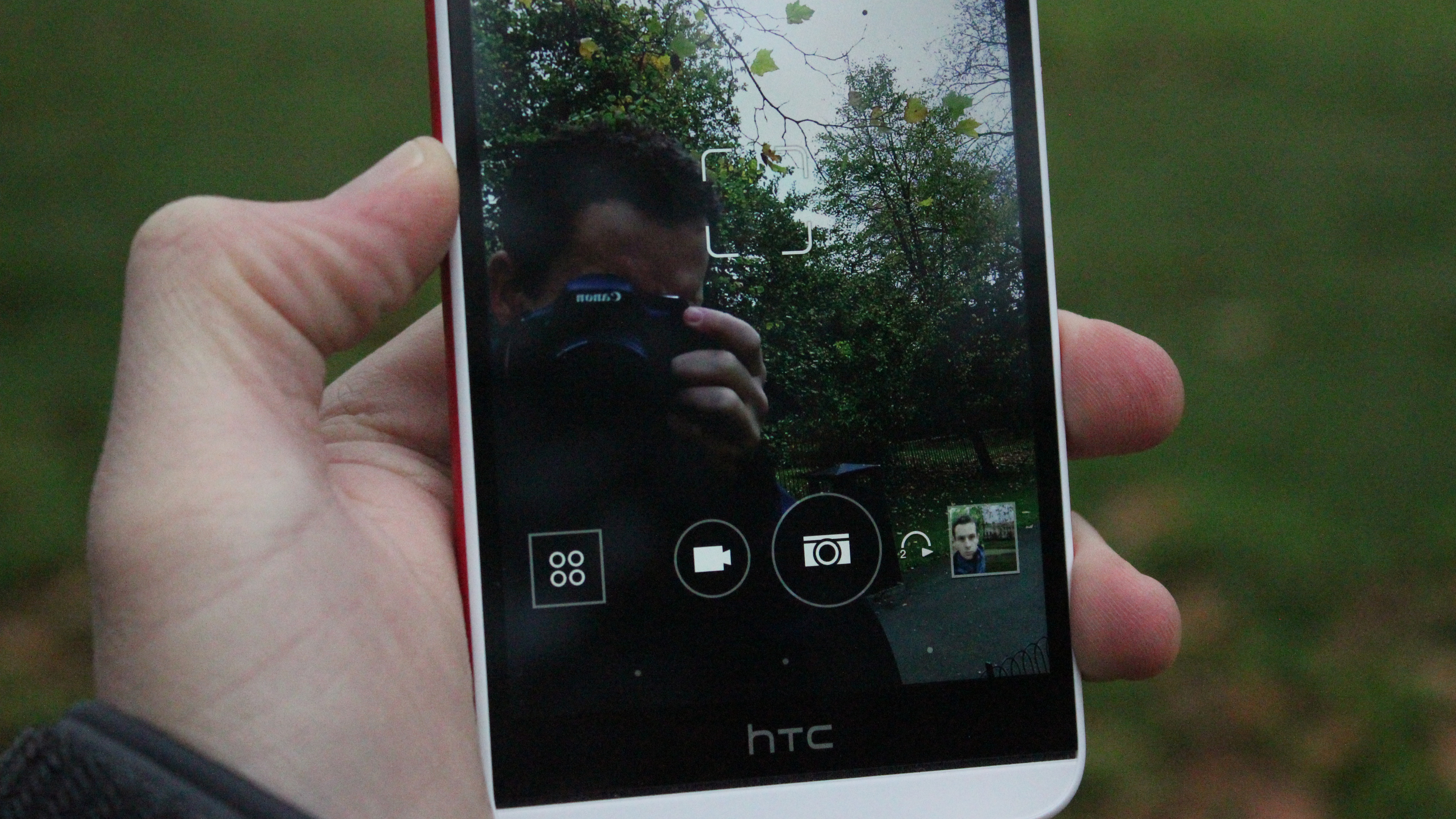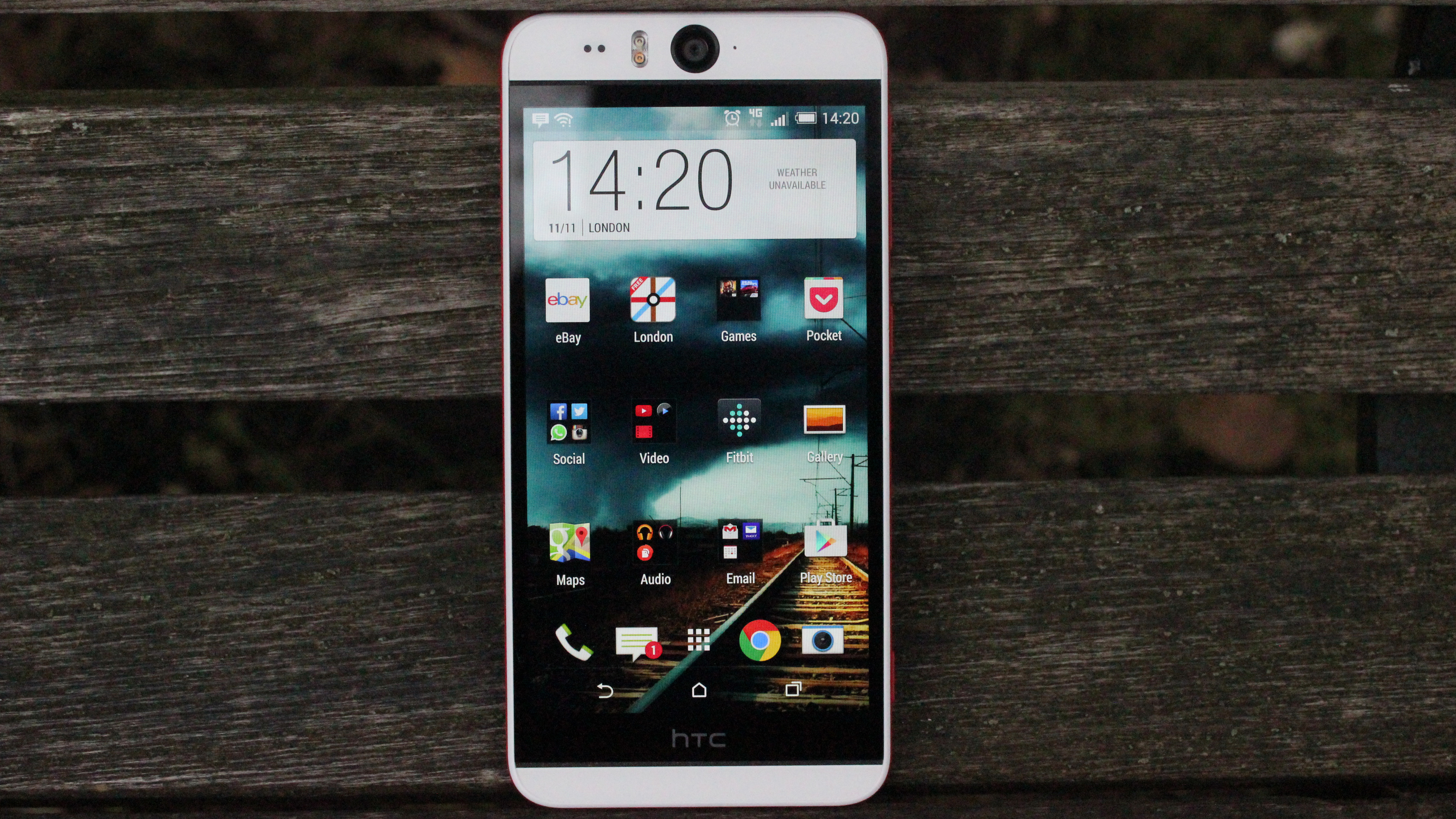Why you can trust TechRadar
HTC is making the Desire Eye all about the camera. The company has dropped the 4MP "Ultrapixel" route it took with the One M7 and One M8 and opted for a 13MP snapper instead. Two, in fact.
Both the front and the back cameras are supported by a two-tone dual-LED flash and are capable of shooting 1080p video at 30fps. The front-facing camera has a slightly wider lens so you can have group video calling as well.
HTC's face-tracking software does a good job of keeping everyone in focus, although I'm not sure how often you're really going to use a smartphone for a team video conference.

Unfortunately, as I mentioned earlier, the front-facing camera just isn't quite as good as HTC wants it to be. It picks up a lot of light and the result is a whitening of the images that's noticeable when looking at skin tone. Then again, in low-light situations without the flash the camera struggles and isn't as good as the HTC One M8.
Obviously the increase in pixels does have an effect and the front camera on the Eye will pick up plenty of detail. Although amusingly, it comes with an adjustable "beautification scale" that will smooth out the imperfections the camera has picked up in your skin.

To be clear, the quality of the front-facing camera is a big step up from the 5MP cameras we're used to seeing on phones and tablets, but just isn't enough to beat out the flagship models. I do just want to mention the dedicated shutter button, though. On most Android handsets you can use the volume rocker as a makeshift shutter button, but it's always a pleasure to have a proper one built in.
The rear-facing camera is a solid enough performer, but it still won't best the very top phones. The sensor produces an image that's ever-so-slightly darker with a better contrast.
If you really want to get into the nuts and bolts of the camera then HTC has given you the means to do so. There are several ways to adjust the ISO and white balance, as well as applying filters and post-snap crops and edits.
There's no Duo sensor here like there was on the M8 so you can't re-focus the picture after you've taken it. HTC has also left out its Zoe mode that combines a high-res burst mode with a 3-second video snippet.

You can shoot a 360 degree panorama or use the photo booth mode which acts as a surrogate burst mode for Zoe. Perhaps the most interesting feature though is the dual-capture mode that shoots simultaneously from the front and back cameras – splitting the screen in two.
HTC's promotional video showed this in use on a mountain bike ride – capturing both the direction of travel and the commentary from the rider. It's a pretty neat feature that shouldn't by any stretch be a reason to buy the phone, but you'll have fun creating things with it.

That's about the best way to sum up the cameras on the Desire Eye. The features are fun to play with, but don't buy the phone on the strength of the camera alone. Click over the page to see some examples of pictures taken with the Desire Eye.
